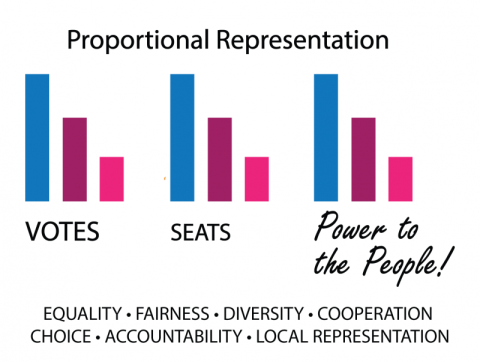A proportional representation system would eliminate gerrymandering and make 3rd parties viable.
The current winner-take-all system of electing representatives produces disproportionate representation; especially by excluding minor parties from getting any representation. A party can win 30% of the vote in every congressional district, yet end up with no seats in the House of Reps.
Additionally, a party winning 100% of the vote in a district gets as many representatives (1) as another party winning 51% of the vote in a different district. This structure makes gerrymandering a very powerful tool on a national level.
This could be solved by a proportional representation system via party list voting. Everyone would vote for the party they want, and parties would get the percentage of seats in congress equal to the percentage of votes they get in the country.
The House would be expanded to 872 seats - double the 435 it is now, plus 2 more for Washington, D.C. Each district would be split in half - roughly 375,000 people per district.
Under a party list system, parties choose which party candidates to seat. Here are two possible options (of many) for how a party could choose who to seat:
- Based strictly on which districts give them the most votes (i.e. districts where they have their largest constituencies).
- A mix of districts spread throughout the country to help bridge cultural/geographical divides and help build their constituencies nationally, while still maintaining the party platform.
Ranked-choice voting should also be part of this system to handle when one or more parties choose not to serve in the government if they don't win more than 50% of the vote. Parties that choose not to serve will have their seats allocated to the 2nd place choices of their voters.
For example, if the Democratic Socialist party (DSA) wins 40% of the overall vote and chooses not to serve, those seats will be distributed to the 2nd place choices of those DSA voters. If 1/4 of them choose the Democratic Party as their 2nd choice, and 3/4 of them choose the Green Party as their 2nd choice, then the Democratic Party would get an additional 10% of seats, and the Green Party would get an additional 30% of seats.

Comments